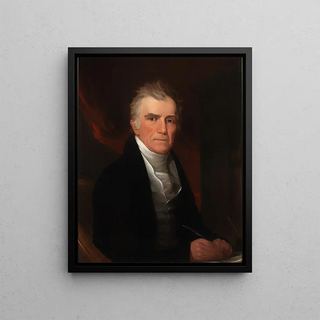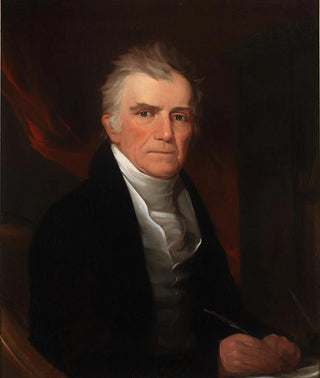Art print | Portrait of Putnam Catlin - George Catlin


View from behind

Frame (optional)
George Catlin’s “Portrait of Putnam Catlin” is part of an artistic tradition that highlights the identity and culture of indigenous peoples with remarkable sensitivity. This artwork, emblematic of 19th-century art, bears witness to an era when artists sought to capture not only the external appearance of their subjects but also the very essence of their existence. As an attentive observer of Native American life, Catlin was able to transcribe on canvas moments of truth, authenticity, and beauty. This portrait, beyond its simple representation, evokes a story, a collective memory, and invites the viewer to immerse themselves in a rich and complex universe.
Style and uniqueness of the work
Catlin’s style is distinguished by its bold use of colors and meticulous attention to detail. In the “Portrait of Putnam Catlin,” each brushstroke seems to vibrate with energy, revealing a palette that echoes the richness of traditional costumes and ornaments. The artist manages to create an intimate atmosphere, where the subject’s gaze appears to transcend time, engaging the viewer in a silent dialogue. Putnam’s pose, both majestic and approachable, demonstrates a deep understanding of human psychology. This portrait is not limited to a simple physical depiction; it captures the soul of its subject, offering a glimpse into their thoughts and emotions. The carefully orchestrated lighting accentuates facial features and highlights the textures of clothing, adding an almost tactile dimension to the work.
The artist and his influence
George Catlin, often regarded as a pioneer of ethnographic art, dedicated his life to documenting Native American cultures at a time when these cultures were at risk of extinction. His artistic journey is closely linked to his travels across the North American continent, where he had the opportunity to meet and represent diverse tribes. Catlin is not merely a passive observer; he becomes an ambassador for these cultures, seeking to preserve their heritage through his art. His influence extends far beyond his era, inspiring generations of art

Matte finish

View from behind

Frame (optional)
George Catlin’s “Portrait of Putnam Catlin” is part of an artistic tradition that highlights the identity and culture of indigenous peoples with remarkable sensitivity. This artwork, emblematic of 19th-century art, bears witness to an era when artists sought to capture not only the external appearance of their subjects but also the very essence of their existence. As an attentive observer of Native American life, Catlin was able to transcribe on canvas moments of truth, authenticity, and beauty. This portrait, beyond its simple representation, evokes a story, a collective memory, and invites the viewer to immerse themselves in a rich and complex universe.
Style and uniqueness of the work
Catlin’s style is distinguished by its bold use of colors and meticulous attention to detail. In the “Portrait of Putnam Catlin,” each brushstroke seems to vibrate with energy, revealing a palette that echoes the richness of traditional costumes and ornaments. The artist manages to create an intimate atmosphere, where the subject’s gaze appears to transcend time, engaging the viewer in a silent dialogue. Putnam’s pose, both majestic and approachable, demonstrates a deep understanding of human psychology. This portrait is not limited to a simple physical depiction; it captures the soul of its subject, offering a glimpse into their thoughts and emotions. The carefully orchestrated lighting accentuates facial features and highlights the textures of clothing, adding an almost tactile dimension to the work.
The artist and his influence
George Catlin, often regarded as a pioneer of ethnographic art, dedicated his life to documenting Native American cultures at a time when these cultures were at risk of extinction. His artistic journey is closely linked to his travels across the North American continent, where he had the opportunity to meet and represent diverse tribes. Catlin is not merely a passive observer; he becomes an ambassador for these cultures, seeking to preserve their heritage through his art. His influence extends far beyond his era, inspiring generations of art






